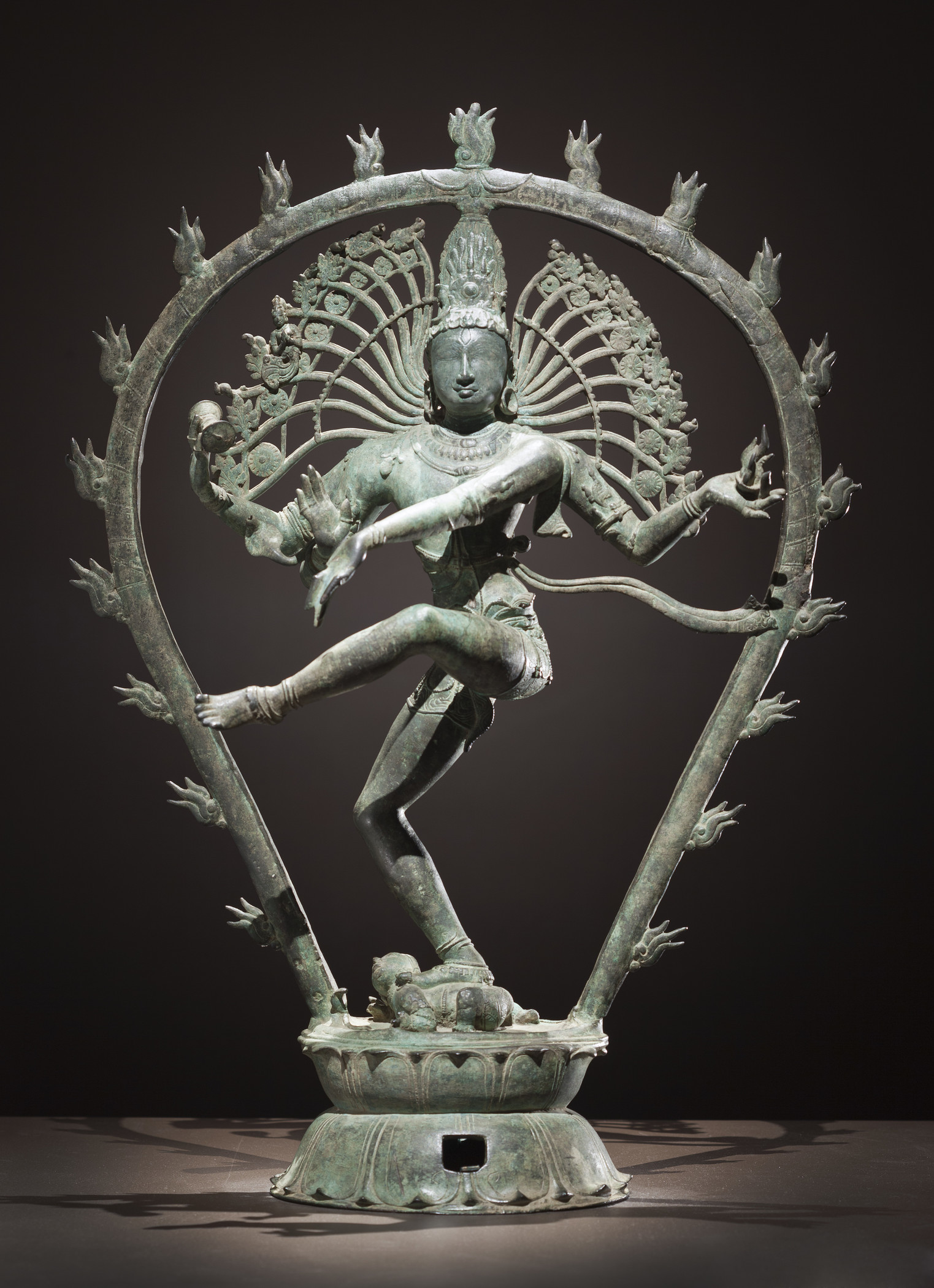Shiva is an integral part of the Hindu pantheon and the third God (the destroyer) of the triumvirate (along with the creator, Brahma, and the preserver, Vishnu). This widely popular sculpture portrays him in the form of Nataraja, the patron God (or more accurately, king) of dance. The Shiva Nataraja brilliantly illustrates the cosmic dance of the Ananda tandava or the Dance of Bliss. It symbolizes the endless, eternal cycle of creation, destruction, and regeneration. This is the cornerstone of the Hindu belief system and has also been an immense source of artistic inspiration.
The Nataraja has his right foot on the immortal demon Apasmara, who represents ignorance. Apasmara’s perpetual existence is vital to the preservation of the balance between knowledge and ignorance—for without ignorance, knowledge would have no value. Thus, it is believed that Shiva remains eternally in his Nataraja form suppressing Apasmara.
He is depicted within a flaming halo known as a prabha mandala that represents the cyclical nature of time. His dreadlocks are streaming out in the frenzy of the dance. In his upper-right hand he holds a damaru, a double sided drum that made the primal vibrations initiating the cycle of creation. In his upper-left hand he holds agni or fire, symbolizing his power of destruction. His lower-right and lower-left hand gestures symbolize protection and salvation.
While some older versions of the Shiva Nataraja appeared as early as the 5th century, this iconic rendering first took form in the Chola Dynasty of Southern India around the 10th and 11th centuries. Although probably no longer exclusively hand carved, these sculptures continue to be reproduced for use in Hindu homes, temples, and rituals with very minor, if any, variation from the Chola period.
- Maya Tola
P.S. Read a story of Amrita Sher-Gil – India’s Frida Kahlo!


 Unknown Artist
Unknown Artist